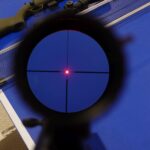USB power banks have been around for a while but technology on them is advancing fairly rapidly. I’ve got a mittfull of power banks and I’ll use them to show a few different use cases where they shine.

If you don’t want to read a 2000 word article, here’s the summary first:
- 20,000 mAh battery banks that offer fast charging are the way to go for extended trips
- Anker is decent for price and durability, but Nitecore makes some VERY compact & lightweight battery banks
- The 5,000mAh battery banks are super convenient for an over nighter
- Fast re-charge and Qi wireless charging features are nice for an “around the house” battery bank
- Everything will eventually be USB-C. Buy appropriately.
Click here to see my spreadsheet comparison of 12 battery banks

Capacity
Typical battery bank capacities:
- 5,000 mAh
- 10,000 mAh
- 20,000 mAh
- 27,000 mAh
27k is the max allowable on an airplane and is the largest you’ll see with any regularity. Since most of these power banks use li-ion cadmium style chemistry, they all have the potential to light on fire if the cells get punctured or fail to charge/discharge properly. Some battery banks manage to pack a lot of power in a really compact space with better battery technology but sometimes, they just use a more space efficient enclosure or less crush space for drop damage.
Battery Bank Rated Capacity vs Battery capacity
Rated capacity of battery banks does not exactly match the real recharges you’ll get out of it, primarily because li-on battery banks store power at 3.7V and charge at 5V. There is some conversion loss in there.
A good rule of thumb is that you’ll get 85% of the juice from the battery bank into your cell phone or other 3.7V device.
LFP/LifePo4 (lithium iron phosphate) USB battery banks are starting to slowly be introduced and that tech is quite a bit safer and lasts for MANY more cycles so I’d imagine we’ll see it in more common use in the coming years. Right now, it’s at the bleeding edge so they’re not price competitive with the standard li-ion battery packs just yet and they’re a bit heavier.
Input (charging the power bank)
Modern power banks these days use USB-C to charge but some cheaper or older models use micro-USB.
Power banks that charge using micro USB are typically limited to charging at 5V and 2.4A (12 watts) or slower. A high capacity battery bank will take FOREVER to charge at that rate.
Power rating is not everything because battery banks won’t take the full amount of juice for the full charge cycle. As an example, my F21i battery bank will throttle up and down during the charge cycle, going between 5 watts and 18 watts depending on temperature as it charges and how full it is.
USB-C, Qualcomm QC, and PD (power delivery) open up faster charging rates for your power bank. These use higher voltages and more intelligent charging circuits to crank in the power. New phones, laptops, and some power banks use the PD standard but there are still some differences within their use of that standard.
Because of numerous specs and charging options, you may not be able to get max charge speed because of the combination of your power bank or phone/other devices.
USB-PD using a USB-C cable can charge anywhere from 5-20V and up to 3A, so 60 watts max (the spec has higher charging options, but those are not relevant for this discussion). Only high end, $100+ power banks support 60 watt charging these days, while 18 watt charge/discharge battery banks are more common and 10-12 watt charge/discharge battery banks are the cheapest ones on the market today.

Qualcomm’s QC3.0 and older aren’t compatible with PD but newer versions like QC4 and 5 are. Android phones these days more usually support QC and not PD, but that’s changing fast. There are even more specs but we won’t talk about them because most power banks won’t support oddball, proprietary quick charging specs.
Output (charging your devices)
Most power banks use the bigger, rectangular USB-A ports for device charging. These cables are ubiquitous as they’ve been around for decades. Some newer power banks also have output USB-C ports. You can cut a bit of bulk out of your setup and out of the connector size required if you go this route.
Some battery banks offer a USB-C port that will do both charging and discharging. Super handy.

The cheapest battery banks will only offer the slowest 5V/2.4A (12 watts) charging, while the better new ones will do 45 watts. Big battery banks might even do 60W or more.
I’m not going to dive into the charging specs that I outlined above again but just suffice to say that specs vary. Also, if you want to use your power bank to charge a laptop, you may need to hit some minimum wattage like 30W for the laptop to start to charge.
On the other side of the power coin, some power banks can’t charge low charge power devices like ear buds, watches or headsets: they don’t see enough power being drawn by the device and they turn off prematurely.
Some battery banks can recharge devices AND be plugged in at the same time. This passthrough style charging is handy for keeping a battery bank topped up, using the battery bank as a basic battery backup for USB powered devices like security cameras, and for recharging the bank and a device without needing more USB wall ports.
Some power banks include a Qi wireless charger built-in. These are SUPER convenient if you use other devices that can support wireless charging. Qi wireless chargers typically comes in regular speed (5W), and fast at 10W, though there are some other less common spec wireless chargers that go faster like Samsung’s 15W wireless fast charge 2. BUT, they’re not efficient. Wireless charging turns a lot of battery bank power into heat instead of power in the phone.
Power banks for around the house
If you use your phone a lot, you might need to top up the battery 2/3 through the day. Personally, I like a 10,000 mAh bank for this kind of thing and I really like the wireless charging ones because my phone can do wireless fast charging. No cable charging means there’s nothing to snag and get my phone flung off the coffee table. Wireless charging is not super efficient and you won’t get as much juice out of the bank into your phone this way but that doesn’t matter when you can recharge overnight or anytime at home.

Power banks for ultralight hiking
If you’re out hiking and need to keep the weight down, it’s super important to get a lightweight battery bank that’s sized right for your needs. That convenient Qi charger is now a liability: the added bulk and inefficiency of wireless charging just aren’t a good pairing for a minimalist hiking setup.

Ultralight hikers can get away with a smaller 5,000 mAh battery for extended periods if they keep their phone on airplane mode, don’t use much lighting at night, or are able to re-charge at a coffee shop on the road. Paired with an ultralight, efficient headlamp like an NU25, you don’t need a lot of extra battery bank storage and 1.5 phone charges might be enough.
For a 5 day trip out of range, a 10k mAh battery bank will offer a bit more fudge room.

For ultralight hikers that need a super quick top-up on their battery banks while at that coffee shop or airport, fast battery bank recharge rates are important.
Fast discharge rates are not super important while hiking since you can recharge devices overnight or in your backpack while you hike.

The most optimized ultralight hiking kit would ONLY use USB-C devices (phone, headlamp, charger) and a single, short USB-C to USB-C cable.
Power banks for hunting trips
For weeklong trips out to a hunting cabin, camping or other location without power, power requirements are a bit higher. You may have higher power lights that need charging, plus your phone for GPS and emergencies. Weight may not be as big of a concern if you can leave your battery bank at camp, just capacity and bulk so it doesn’t take too much space.
If you use a USB battery bank-powered vest or jacket, you’ll want a bank that brings as much capacity as possible but still fits inside the vest pocket. Some extra long or wide battery banks may not fit your vest pocket. For long trips using a powered vest or socks or whatever, you may need more than 1 battery bank. Some USB powered vests top out at 10 watts and some can take more. Match your vest with what your battery bank can do.
Compact or ergonomic shapes that can fit in a pocket may be important if you need to charge on the go because cold battery banks lose capacity. For my cold November hunts, I have to keep my phone and any electronic devices in inside pockets so they stay warm and the battery doesn’t die.

Powerbanks for Range Trips
A day trip to the range shouldn’t require a battery bank, but:
- I frequently record using my phone and if it’s cold, my battery gets killed quick
- My ranges are out in the middle of nowhere, and my phone eats the battery trying to get a cell signal
So I sometimes need to give my phone a quick jolt of juice while it sits in a pocket to keep warm. For this use, I really like the small, pocket-friendly 21700-based battery banks. They’re easy to pocket, and have enough juice for what I need, and they’re durable enough to throw into a shooting bag.
Unconventional USB battery banks
I had a couple other batteries that can do USB charging that I thought I’d show, just for fun.


The first is a booster pack/jump starter. These are still essentially just a battery bank, but they’re optimized for massive current delivery to start a cold vehicle with a dead battery. This Gooloo GP200 can do 400-500 amps at 12V and can easily crank over my vehicles, even when they’re frozen with a dead battery at -40. It can also act as a battery bank since it contains 76.9WH, which is about the equivalent of a 20,800 mAh battery bank.
It’s super bulky but it can still do 12W on one USB port and 18W on the other, which is pretty decent. If you want a little peace of mind in starting a vehicle with a dead battery, as well as doing some light duty USB charging, these are OK.

If I was fishing and I wanted to leave all the battery banks behind, this 60AH LFP battery might do the trick. It has 12x the capacity of the other battery banks shown, it can be used to power a small electric trolling motor, or it can be used as an RV battery. It’s lightweight compared with a traditional deep cycle battery but quite a bit heavier and bulkier than the other options shown. The USB charging ports on this one will only do about 10W charging, so it’s a bit slow.






